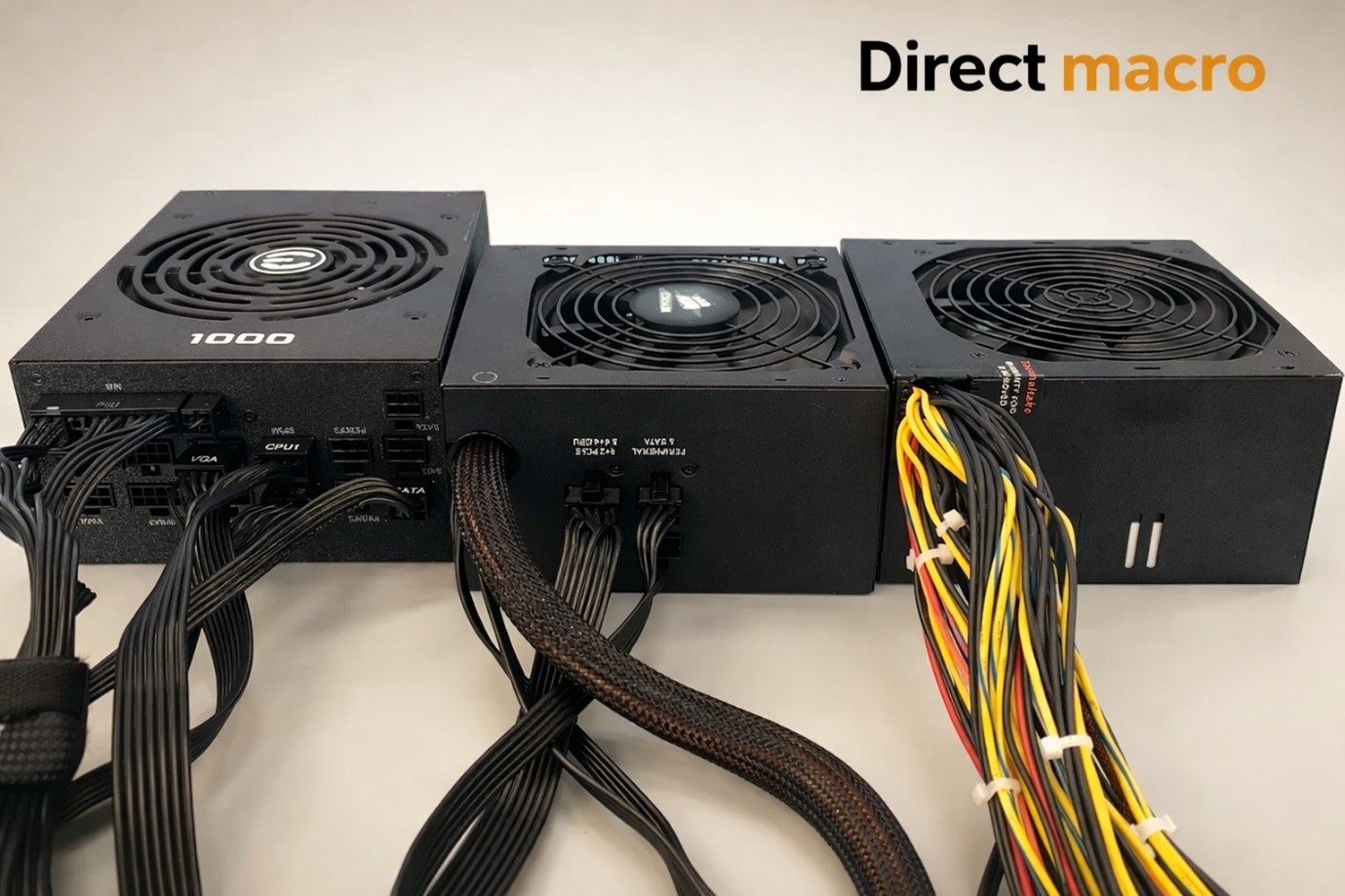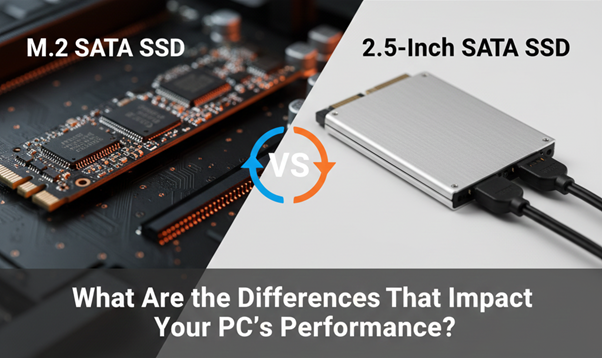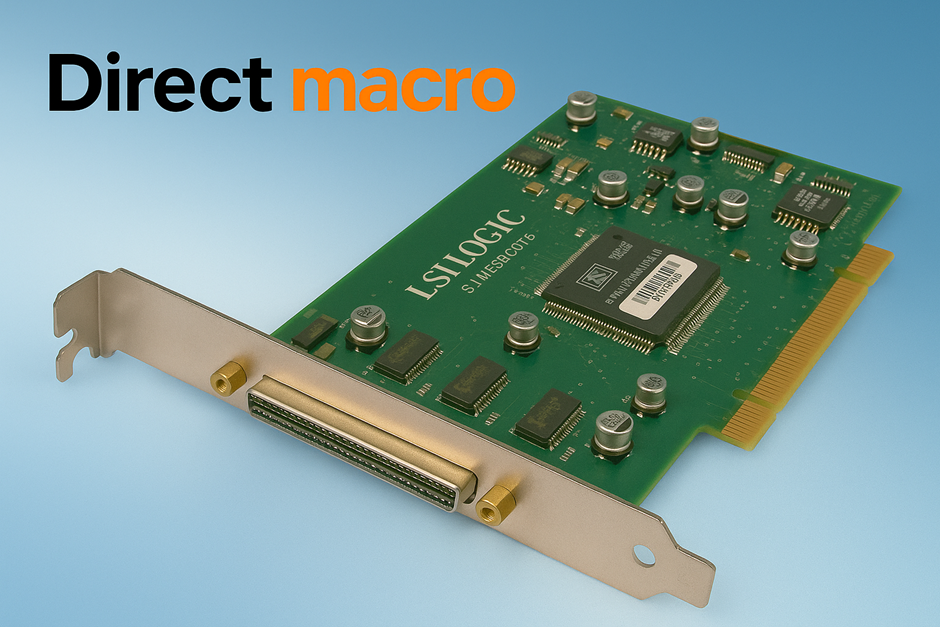Nvidia RTX 50 Series: Release Date, Specs & Price
Nvidia launched its RTX 50 series at the CES 2025, the biggest tech event of the Consumer Electronics Show. The speculation about the Blackwell lineup graphic comes to an end as the CEO Jensen Huang unveiled the flagship GPU RTX 5090 at CES 2025. The prices and availability of four major GPUs from 5090, 5080, 5070 Ti, and 5070 were discussed in the event. The RTX 5090 is already out in the market from January 31st, 2025. In its recent press release, Nvidia disclosed that all four cards will be available in the market in upcoming months. In this blog, we will review the RTX 5000 Series graphic cards, their release dates, available specs, officially disclosed prices, and their third-party overlocked versions.
GeForce RTX 5090 – The Most Powerful Graphic Card
The GeForce RTX 5090 is currently the most powerful GPU available in the market. It indisputably offers game-changing capabilities to gaming experts and content creators. The GPU heavily relies on Artificial Intelligence and Multi-frame gen to deliver incredibly high performance in large data workloads. Compared to its predecessor, RTX 4090, RTX 5090 will have the fastest DRAM. With gddr7 graphics technology, it’s going to be a beast of a graphic card. Since the specifications are officially revealed we can now evaluate the performance of 5090.
RTX 5090 Specification Revealed
Nvidia has for now revealed the specification of its founder edition RTX 5090 GeForce graphic card. Compared to RTX 4090 the RTX 5090 has more parallel processing power, due to greater numbers of streaming processors. The rtx 5090 offers 170 SMs making it 42 more Streaming processors and so does the ray tracing cores. Nvidia 5000 series. The boosted clock of 2017 MHz is an amazing upgrade.
| Feature | Details |
| GPU Architecture | Blackwell |
| CUDA Cores | 21,760 |
| Ray Tracing cores | 170 4th generation |
| Tensor Cores | 680 5th generation |
| Base Clock | 2407 MHz |
| Boost Clock | 2017 MHz |
| Interface | 16x PCIe 5.0 |
| Memory Interface | 512-bits |
| Memory Bandwidth | 1792 GB/s |
| VRAM | 32GB (28GB per Second) |
| Memory technology | GDDR7 |
| Memory Interface | 512-bits |
| DLSS4 | Yes |
| RAY tracing | Yes |
| Nvidia Reflex 2 | Low latency mode frame wrap |
| Multi-monitor Support | Up to 4 monitors |
| Maximum GPU temperature | Up to 90 oC |
| Total power consumption | 575 Watts |
| Power Connectors | 1×16-pin |
| Supplementary power connector | 4x PCIe 8-pin Cables |
RTX 5090 Release date:
The flagship GPU, RTX 5090, was the first graphic card from the entire RTX 5000 Series to become available in the market on January 31st, 2025. Nvidia discloses the market availability of the RTX 5090 at the CES event on 6 January 2025. The GPU can only be purchased from the official Nvidia website. Initially, there were no designated retailers for the RTX 5090. Although now it’s available to very selected retailers. Though they are not Nvidia’s designated retailers, but third-party brands that are selling overclocked versions.
GeForce RTX 5090 Price:
The flagship GPU, RTX 5090 was launched by Nvidia at a market price for $1999. Although its overclocked versions are available at third-party resellers. The Gigabyte 5090 Windforce overclocked is available at a price of $2399.99. Similarly, ASUS TUF Gaming GeForce RTX 5090 32GB GDDR7 is available at a price of $3,339. The other rebranded and overclocked versions are coming soon.
RTX 5080 Release Date
RTX 5080 was also released alongside 5090 on the big tech show of CES 2025. It was set to be available in the market by first week of February as claimed by Nvidia CEO Jensen Haung. The card is available at official NVidia’s website or with some third-party sellers like ZOTAC, Gigabyte, and MSI.
RTX 5080 GPU Specifications:
Nvidia 5080 is the second most powerful graphic card from RTX 5080. The GPU has more Tensor core AI compared to 5090, but since it comes with 16GB.
| Feature | Details |
| Shader Cores | Blackwell |
| CUDA Cores | 10,752 |
| Ray Tracing cores | 171 TFLOPS 4th generation |
| Tensor Cores (AI) | 1801 AI TOPS 5th generation |
| Base Clock | 2.62 GHz |
| Boost Clock | 2.30 GHz |
| Interface | 16x PCIe 5.0 |
| Memory Interface | 256-bits |
| Memory Bandwidth | 960 GB/s |
| VRAM | 16GB |
| Memory technology | GDDR7 |
| Memory Interface | 256-bits |
| DLSS4 | Yes |
| RAY tracing | Yes |
| Nvidia Reflex 2 | Low latency mode frame wrap |
| Multi-monitor Support | Up to 4 monitors at 4k Up to 2 Monitors at 8k 100hz |
| Maximum GPU temperature | Up to 88 oC |
| Total power consumption | 360 Watts |
| Power Connectors | 1×16-pin |
| Supplementary power connector | 3x PCIe 8-pin cables |
Nvidia GeForce RTX 5080 Price
The launch price of RTX 5080 is $999 on Nvidia’s official platform. While other overclocked versions by third-party sellers are available at premium prices. The ZOTAC RYX 5080 AMP extreme infinity is available for $1349.99. Gigabyte Nvidia GeForce RTX 5080 AORUS Master is available for $1480, while Gigabyte GeForce 5080 AORUS Extreme is available at an all-time high price of $1540.
Nvidia GeForce RTX 5070 Ti and RTX 5070 Release date
The Nvidia RTX 5070 Series is not yet available in the market. The official release date for RTX 5070 is on 20th February 2025. On the other hand, its advanced version of RTX 5070 Ti is going to launch on 5th March 2025. The buzz around the town also proclaims that NVidia deliberately delayed the release of RTX 5070 Ti to March to compete with AMD’s upcoming GPU, Radeon 9070, from its recently launched 9000 series. At CES 2025, CEO Jensen Huang officially disclosed that the RTX 5070 TI is a mid-tier GPU, but it has some unprecedented upgrades over its predecessor 4070 TI. It will have 12.8 CUDA Capabilities with GDDR7 memory technology. The model has a lower number of Ray tracing and tensor cores compared to 5090. But still, 8960 Cuda cores and 5th generation 1406 AI TOPs seem like they are challenging the industry’s benchmark for a mid-tier graphic card.
| Feature | RTX 5070 Ti | RTX 5070 |
| Shader Cores | Blackwell | Blackwell |
| CUDA Cores | 8,960 | 6144 |
| Ray Tracing cores | 133 TFLOPS 4th generation | 94 TFLOPS 4th generation |
| Tensor Cores (AI) | 1406 AI TOPS 5th generation | 988 AI TOPS 5th generation |
| Base Clock | 2.30 GHz | 2.16 GHz |
| Boost Clock | 2.45 GHz | 2.51 GHz |
| Interface | 16x PCIe 5.0 | 16x PCIe 5.0 |
| Memory Interface | 256-bits | 192-Bits |
| Memory Bandwidth | 896 GB/s | 672 GB/Sec |
| VRAM | 16GB | 12GB |
| Memory technology | GDDR7 | GDDR7 |
| Memory Interface | 256-bits | 192-bits |
| DLSS4 | Yes | Yes |
| RAY tracing | Yes | Yes |
| Nvidia Reflex 2 | Low latency mode frame wrap | Low latency mode frame wrap |
| Multi-monitor Support | Up to 4 monitors at 4k 165Hz Up to 2 Monitors at 8k 100Hz |
Up to 4 monitors at 4k 165Hz Up to 2 Monitors at 8k 100Hz |
| Maximum GPU temperature | Up to 88 oC | Up to 85 oC |
| Total power consumption | 300 Watts | 250 Watts |
| Power Connectors | 1×16-pin | 1×16-pin |
| Supplementary power connector | 2x PCIe 8-pin cables | 2x PCIe 8-pin cables |
Nvidia GeForce RTX 5060 Ti, RTX 5060 and RTX 5050
Nvidia has officially disclosed the GPU specs of only the first four GPU models from the Rtx 5000 series, which are RTX 5090, RTX 5080, RTX 5070 Ti, and RTX 5070. So, will there be rtx 5060? That’s the question roaming in every mainstream gamer’s mind. Even the entry-level cards in the Rtx 50 series will have GDDR7 along with amazing graphics. The rest of the models are rtx 5060 ti, 50560, or 5050. However, there are speculations about the Rtx 5060 release date and its advanced model, RTX 5060 Ti. The RTX 5060 Ti will be available in the market after the launch of the RTX 5070 in March; the most probable date is the 5th of March. On the other hand, RTX 5060 is going to be available in the market by April.
All the GPUs are based on DLSS4 with additional Multi Frame Generation, which was unavailable in RTX 4000 Series GPUs. The RTX 5000 series offers a CUDA Capability score of up to 12.8 compared to 8.9 in the RTX 40 Series. Despite that, both series have many similar aspects, such as direct max 12 ultimate support, AV1 Decode, and AV1 Encode support.
| Features | RTX 5090 | RTX 5080 | RTX 5070 Ti | RTX 5070 |
| AI TOPS | 3352 | 1801 | 1406 | 980 |
| NVIDIA Encoder | 3x 9th Gen | 2x 9th Gen | 2x 9th Gen | 1x 9th Gen |
| Memory Bandwidth | 1792 GB/Sec | 960 GB/Sec | 896 GB/Sec | 672 GB/Sec |
Key Improvements in the GeForce RTX 50 Series Could Include
Nvidia 50-series GPUs hit the market in 2025, three years after its last release of the Rtx 4000 series in 2022. This is the first time Nvidia has taken a whole three years to develop a major release. The key improvements are worth the prolonged wait.
Higher VRAM:
The upcoming RTX 50 series has RAM capacities of 16 GB and 32 GB. The RTX 50 will feature different GPU models, such as RTX 5070, RTX 5080, and RTX 5090. The RTX 5090 has a 32 GB RAM capacity, while the RTX 5080 will have around 16 GBS. The overclocked version of 5080 will have 34 GB of memory. The mid-tier versions, like 5070 and so on, have a minimum of 16 VRAM.
Improved Ray-Tracing:
The upcoming generation of Nvidia 50-series GPUs incorporates the latest technology of PCIe 5.0 & DisplayPort 2.1. All the GPUs come with 5th-generation Tensor cores, fourth-generation Ray tracing cores, and increased streaming multiprocessors. The RTX 50 Series brings advanced neural rendering technology with DLSS4 Multi-frame generation.
Nvidia Blackwell Architecture
One of the latest advancements that Rtx 50 GPUs are set to bring is the Blackwell architecture for professionals. Nvidia’s Blackwell Architecture leverages advanced levels of generated AI and accelerated computing. How so? It uses micro tensor scaling and using 4-bit floating point AI to ensure performance accuracy. Reflex technology allows ultra-fast responsiveness for target acquisition and prompt reaction with precise aiming in high-end gaming. Whether you need the GPU for gaming, professional workload, data engineering, or content creation, the Rtx 5000 series is the perfect choice.
Power Efficiency:
The recent Rtx 50-series is supposed to have Improved power efficiency. The Rtx 5080 has 360 watts, while the 5090 takes 575 watts. The Mid-tier graphics take even less power to function fully. The top-tier graphic cards, like RTX 5080 and 5080 Graphic cards, can handle up to 90 Degrees of PC temperature, while the mid-tier can tolerate around 88C temperature.
Advanced AI Features:
In GeForce RTX 50, Nvidia is using advanced tensor cores while leveraging the power of its supercomputer-trained AI network to ensure workflows like never before. This includes creating lifelike images in more realistic environments and advanced simulations. Blackwell uses a transformer AI model trained by supercomputers to provide better rendering of complex scenes. This way, DLSS Ray Reconstructions, and DLAA perform better even in intricate frames with boosted FPS.
Conclusion
The launch of the RTX 50 series is turning out to be a game changer for many professionals in the IT industry. Nvidia’s most awaited graphic software series, the Rtx-50 series, is becoming widely popular for its unprecedented Blackwell GPU technology. The GPU offers impressive performance; it has 3nm Process node and GDDR 7 memory. It has display port 2.1, which is supported by the unprecedented 32GB RAM introduced in any Rtx series.
FAQs
How long will an Nvidia graphics card last?
Nvidia has earned the name tag of the most durable graphic manufacturer in the market; on average, each of its graphic cards performs at best for the next 7-8 years. This means the graphic cards from the older generation will not be obsolete with the immediate release of the next-gen GPUs. But if you want to experience the features of the new release, then you have to upgrade.
What is the Codename of RTX 50 series?
Nvidia’s upcoming Rtx 50 series is codenamed “Blackwell” because it is going to introduce its most advanced GPU Blackwell architecture.
What is the most powerful graphics card right now?
The most influential graphic card in NVidia’s entire RTX series is the GeForce RTX 5090. If you are upgrading to the RTX 5090, it may be an extensive budget decision, but the performance is worth the money if you are looking for multi-frame generation.
Is rtx 5090 better than 4090?
The GeForce rtx 5090 delivers overall 33% higher performance compared to its predecessor, GeForce 4090. The best-improved features primarily include a streaming processor, Blackwell architecture, texture units, RT cores, tensor cores, and Cuda cores.
Do you need advice on buying or selling hardware? Fill out the form and we will return.

Sales & Support
(855) 483-7810
We respond within 48 hours on all weekdays
Opening hours
Monday to thursday: 08.30-16.30
Friday: 08.30-15.30








